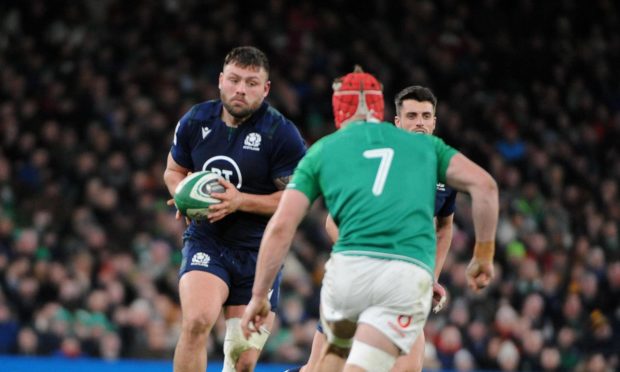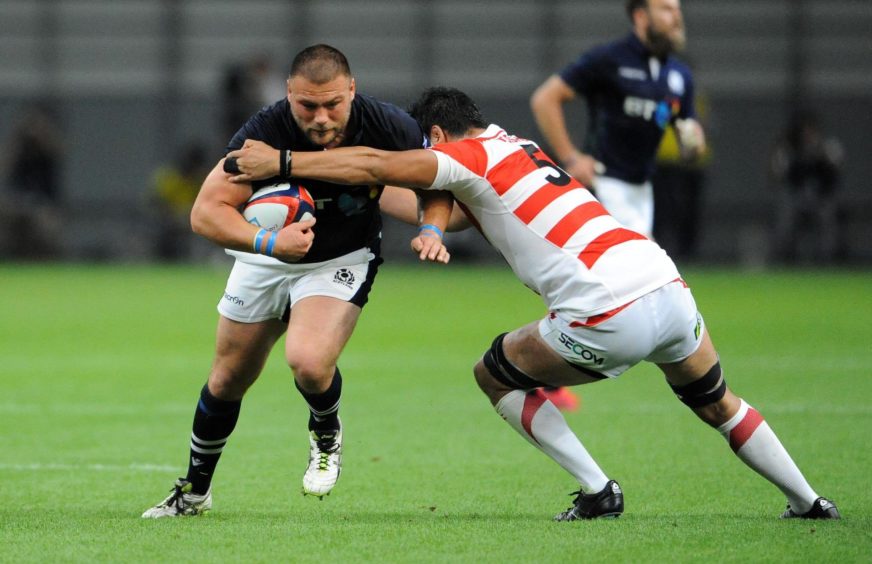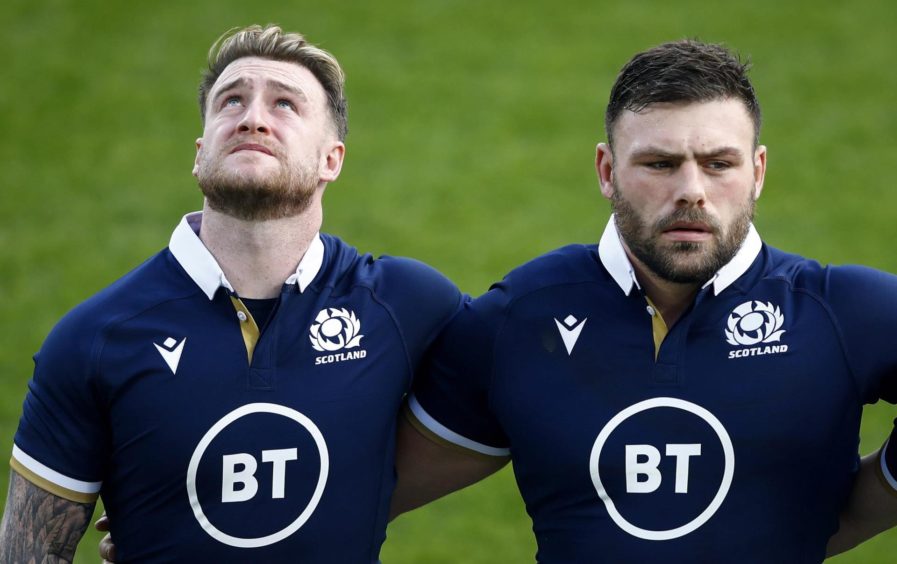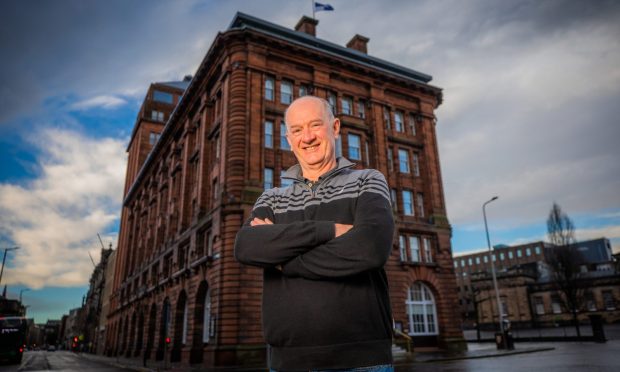In 2020, it’s been one calamitous occurrence after another. I remember writing that 2016 – Brexit, Trump, deaths of Ali and Bowie at al – was a somewhat tumultuous, but that was but a summer stroll in the countryside compared to this year.
It doesn’t nearly make up for what else has occurred, but mercifully this year’s Breakdown Player of the Year is an unmitigated, unashamed good news story. A dream come true, in actual fact.
At the end of 2019, a lot of us thought that Rory Sutherland was almost an afterthought, playing out his contract at Edinburgh.
He’d been a Scotland internationalist before the debilitating groin injury that basically took him out for two years, three months of which was spent on his back recovering from major surgery.
Avert your eyes
Avert your eyes now if you’re squeamish. In 2017 Sutherland had been running a sprint training session when a groin ligament snapped. The strain of the running injury also pulled the other adductor ligament clean off the bone.
He needed bilateral groin reconstruction, when the adductor ligaments are literally screwed back into place. Hence his requirement to be on his back and in a wheelchair for a significant period of rehab.
After coming through that, Sutherland had comeback player of the year for 2019 sewn up simply by starting Edinburgh’s away Challenge Cup game at Wasps on December 14 – his first start for the club since 2017.
But he was stuck behind Pierre Schoeman and Jamie Bhatti in the pecking order of looseheads at Edinburgh. He also started in the away game at Bordeaux-Begles in the first week of 2020, and those two starts were apparently enough for Gregor Townsend.
Eyebrows raised
When Sutherland was named in Scotland’s Six Nations squad in the middle of January, eyebrows raised and creased in equal measure.
Loosehead prop had become a problem position during the World Cup. But was Toonie so desperate as to field a player so seriously undercooked?
Turns out, he was. Sutherland was named the starter against Ireland in the opening Six Nations match, in direct opposition to Lion Tadhg Furlong.
The rest is now remarkable history, and credit to the national head coach for his hunch. Sutherland with Zander Fagerson, became the focus of a dominant Scottish scrum with a new specialist coach in Pieter de Villiers.
From nowhere to potentially a Lion in a month and a half
By the premature end of the championship, Sutherland was being spoken about as a Lion himself – an astonishing situation considering his position as late as mid-January.
After lockdown, an ankle injury against Italy caused him to miss the Autumn Nations Cup game with France. But Sutherland has ploughed the same trail, and his reputation continues to grow. He was magnificent in all areas in Edinburgh’s season-changing win at Sale Sharks at the weekend.
Not huge by modern standards of prop, Sutherland is immensely strong. He averages a 200kg bench press, which easily puts him in rugby’s worldwide top ten.
But Rory’s also mobile about the park, witness his break against England in February which made him a folk hero overnight. Sutherland’s also a quality defender, an essential trait for a prop in the modern game.
While he ticks all the boxes for a modern player, Sutherland is old school in every other way.
He’s not an academy product and wasn’t nurtured from the moment he showed promise at an elite public school.
A Hawick High School boy
Instead, he left Hawick HS at 15 for an electrical engineering apprenticeship, playing for the Greens on weekends.
After one hiatus when he became a Dad, Rory was mentored by former Scotland prop George Graham at Gala. It was a big decision for a working, family man to turn pro when Edinburgh came for him.
That must have seemed like a mistake when he was wheelchair-bound and needed his wife’s help to go to the loo. Or when he was basically teaching himself to walk and run again.
Forbearance
It’s a tribute to forbearance, modesty and talent that Sutherland is now arguably the best loosehead in the British Isles. With Oli Kebble qualified and Schoeman soon to follow, Scotland are hugely strong at that “problem position”.
“When I was going through those tough times, imagining being where I am now helped to get me through,” says Sutherland now. “Having those positive thoughts of ‘well, it can happen again if I put the work in’.”
The dreams of simply getting back into the blue jersey were enough to drive Sutherland on. He’s been the best story in Scottish rugby this year – for years in fact – and is unquestionably our Player of the Year.




